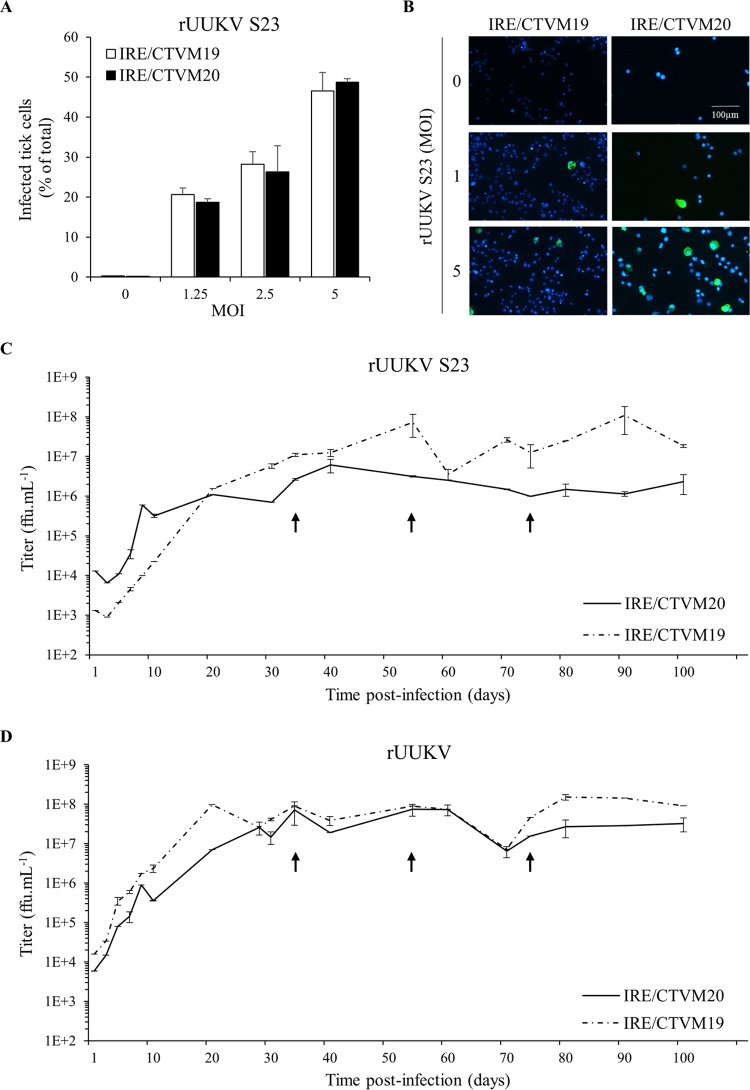FIG 3.
Infection of tick cells by rUUKV and rUUKV S23 is persistent. (A) Tick cell lines IRE/CTVM19 and IRE/CTVM20 were exposed to BHK-21 cell-derived rUUKV S23 at the indicated MOIs for 48 h. Infection was analyzed by flow cytometry after immunostaining against the nucleoprotein N. (B) IRE/CTVM19 and IRE/CTVM20 cells were exposed to various MOIs of rUUKV S23 derived from BHK-21 cells. The next day, infected cells were immunostained for the intracellular UUKV nucleoprotein N using the anti-N primary mouse monoclonal antibody 8B11A3 and an AF488-coupled anti-mouse secondary monoclonal antibody (green). Nuclei were stained with Hoechst (blue), and samples were analyzed by wide-field microscopy. (C and D) IRE/CTVM19 and IRE/CTVM20 cells were exposed to rUUKV S23 and rUUKV, as indicated. Supernatant (200 μl) of infected cells was harvested daily during the first 10 days and every 10 days thereafter. The production of infectious viral particles in the supernatant was determined by focus-forming assays. The cells were subcultured in fresh complete medium (1:1) after sampling of the parent cells on days 34, 54, and 74 (black arrows).

